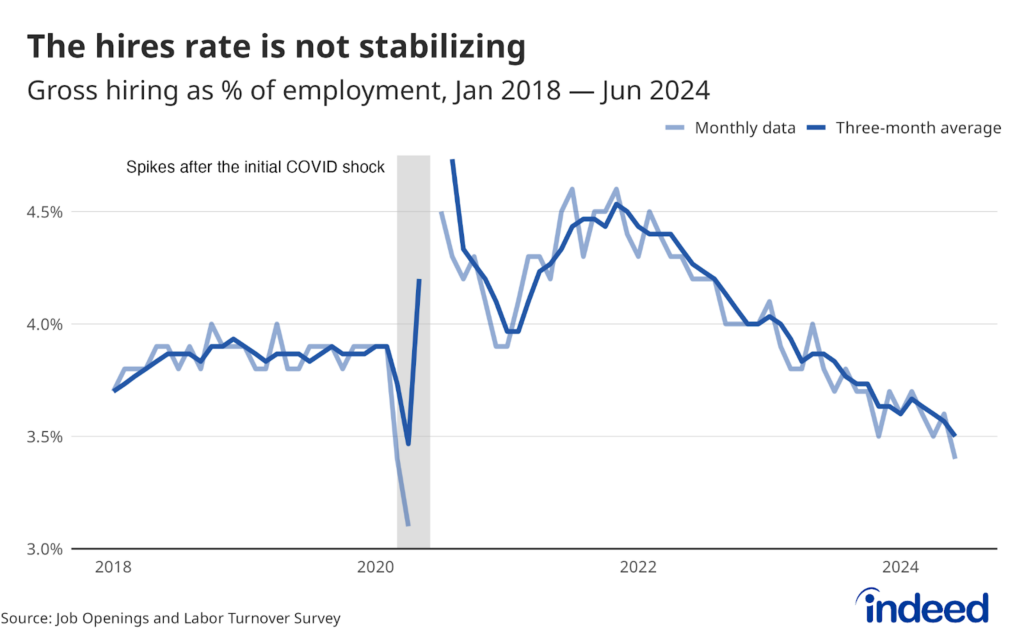Key points:
- Wage growth continues to cool down. The Employment Cost Index for the second quarter showed private sector wages growing at a 3.4% annualized rate, the slowest pace since September 2020.
- This wage growth data aligns with other labor market indicators: This labor market is not adding fuel to the inflationary flames.
If you thought strong wage growth was a sign that the US labor market was still overheated, you can put that concern to rest. According to the Employment Cost Index, compensation and wage growth continued to slow in the second quarter of the year. Wages for private sector workers, a key metric, slowed considerably over the quarter and are now growing at an annual rate of 3.4%. This is the slowest growth since September 2020. Not only is this a slower pace compared to the past few years, but the current rate is consistent with low inflation and current labor productivity growth.
Even if the firming of wage growth for non-incentive-paid private sector workers — a series closely watched by the Federal Reserve — suggests that underlying wage growth is closer to 4%, this is still a sustainable rate. With the current robust labor productivity growth, employers can afford robust wage growth. Additionally, inflation-adjusted wages remain below their pre-pandemic trend, indicating that workers could benefit from an increase in purchasing power. The wage growth data aligns with other labor market indicators: This labor market is not adding fuel to the inflationary flames.


